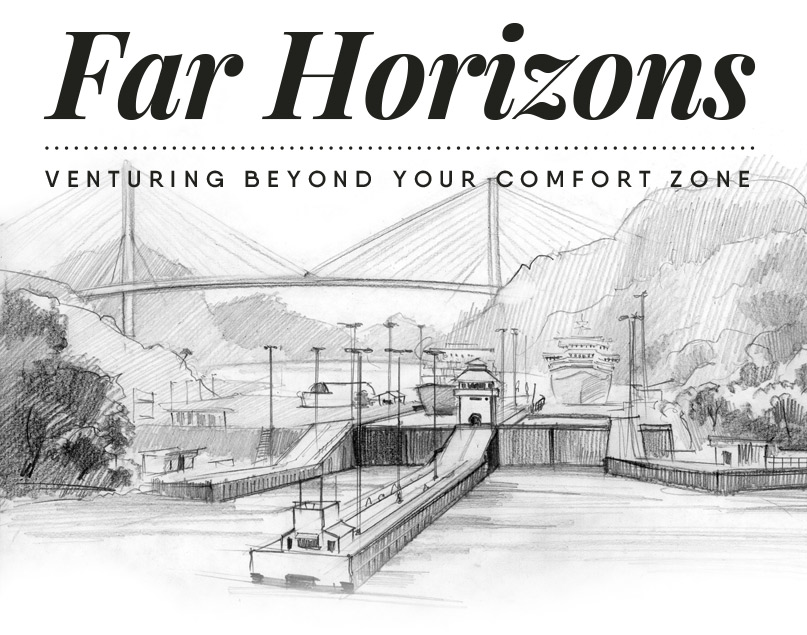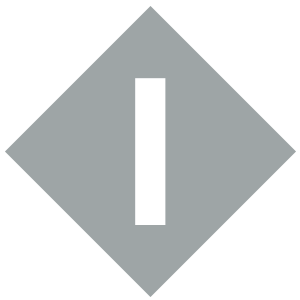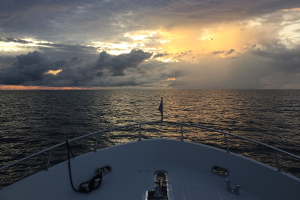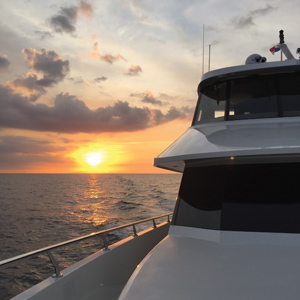
 I notice a 55 Offshore CPMY that must have come in late. Getting to Panama is a long haul for any vessel, so mostly what you see here are sailboats and trawlers. To see a mid-size cockpit motoryacht is slightly out of the ordinary, and I wanted a look. I am walking down the dock towards her when I hear “Chris! Chris Couch!” It is not uncommon for me to run into people I know up and down the West Coast of the United States, but here in Panama? I look in the direction of the voice calling my name and it’s coming from the cockpit of the 55 Offshore. I peer in disbelief at the two people I see before me.
I notice a 55 Offshore CPMY that must have come in late. Getting to Panama is a long haul for any vessel, so mostly what you see here are sailboats and trawlers. To see a mid-size cockpit motoryacht is slightly out of the ordinary, and I wanted a look. I am walking down the dock towards her when I hear “Chris! Chris Couch!” It is not uncommon for me to run into people I know up and down the West Coast of the United States, but here in Panama? I look in the direction of the voice calling my name and it’s coming from the cockpit of the 55 Offshore. I peer in disbelief at the two people I see before me.
Two years earlier in early October of 2013, I received a call from a boat owner named Bob. Bob asked me to take him and his 55 Offshore Cockpit motoryacht from Everett, Washington to San Diego, California. He wanted to be down there by early November, so that he and his wife Cathy could participate in an annual event called FUBAR (Fleet Underway to Baja Rally).
FUBAR is an annual organized trip of powerboats that travel from San Diego to Cabo San Lucas, Mexico. Bob had owned his boat for 15 years and cruised extensively in the Pacific Northwest, but had never been offshore. On this trip down the Coast, he wanted to be able to learn all he could about long-range passages.
Late October, we departed Everett for San Diego. I will never forget the first few minutes as we left the channel, cruising out into Puget Sound. I engaged the autopilot and it immediately started hunting left and right of the selected heading.
“How long has the autopilot been doing this?” I asked.
Bob answered, “Oh, as long as I can remember.” I went into the settings and changed two of the autopilot’s parameters. Suddenly, as if by magic, for the first time in years, the autopilot started doing what it was supposed to do. We just started laughing. I encounter this often, where a boat owner either just lives with how equipment is performing, or doesn’t fully understand what proper operation looks like. Knowing how your equipment is supposed to operate is the first step in troubleshooting a problem.
Bob’s education and trip preparation started the moment I first met him on the boat. My fourth Canal transit a couple of years earlier had been on a 64 Offshore, so I was very familiar with Offshores and their systems—especially their fuel tank and manifold layout, which is relatively complicated. We went through the boat stem to stern looking at every piece of equipment and system.
We identified anything that looked like it would need fixing or maintenance and catalogued anything that would need to be secured or stowed further for the offshore environment. We reviewed the maintenance for the main engines and generators, noting any additional maintenance they needed. We not only looked at the boat in terms of the trip to San Diego, but her extended schedule. Critical items and spare parts were discussed such as water pumps, impellors, belts, filters, and fluids. A look at the chart plotter was done to ensure all the charts necessary for the entire journey were included.
I introduced Bob to the weather site that I use (buoyweather.com), helped him navigate the forecast weather maps, and showed him how to read them. Then, for the following two weeks until our departure, he followed along with me as we watched for, identified, and then made a safe prudent decision on a suitable weather window. Upon our departure and at every opportunity, we would look ahead at the forecast weather, constantly evaluating the path ahead.

Everett to San Diego is 1,300 nautical miles. We divided the entire trip into legs, treating each one as a separate trip unto itself. Each leg would be determined by the vessel’s safe range at ten knots and the available weather. I recommend at least twenty percent of fuel capacity as a safety reserve. We gave special consideration to departure and arrival times given that each should be done in the daylight to spot the presence of crab pots around each entrance and out from shore to generally 400’ in water depth. If there is a large chop or swell running, then time of slack or flood is also factored as those are the best times to cross most West Coast entrances north of and including San Francisco.
This journey would involve three port stops for fuel where we would stay the night and four legs involving an overnight run. For the uninitiated, running overnight can be a very intimidating experience. Unless it is a clear night with a full moon, you don’t see anything. You are in a sea of blackness where you don’t even see the water.
The trip to San Diego went according to plan. Bob got eight days of hands-on experience with his vessel in the offshore environment. By the time we arrived in San Diego, he was happy and confident that he and his wife would be able to negotiate the upcoming journey down to Cabo. It was my hope that I had given him a good foundation upon which to build the rest of their adventure.
Fast forward to Shelter Bay Marina, Colon, Panama. Who am I staring at in disbelief in the cockpit of their 55 Offshore? Why its Bob and Cathy, nearly 3,000 nautical miles away from where I last saw them! After completing the FUBAR trip and ending up in southern Baja, they decided to strike out on their own and just keep going.
Of all my clients—boat owners I have helped, assisted, and taught—nothing has given me more satisfaction than seeing those two and what they had accomplished. I felt very proud of them and happy to have played a small part. Bob and Cathy realized a dream, a dream that I know many boat owners share. They took that leap into the unknown, jumping off the proverbial cliff.
I remember the first time it really felt like I was jumping off the cliff into the unknown. Oddly enough, it was my fourth Transpac. Crossing number one was aboard a 95’ U.S. Coast Guard Patrol Boat. I was taking her from San Diego to Hilo on the Big Island. I had the comfort of having a 378’ Coast Guard Cutter shadowing and providing fuel twice along the way. Crossings two and three were on a 165’ converted oil industry seismic survey vessel being used as a supply vessel for a Seattle-based fishing company.
Crossing number four would be my first in a smaller motoryacht. She was an 85’ Broward that I picked up in Fort Lauderdale, Florida, and was taking to Honolulu, Hawaii. She had been extended with a Euro Transom and fuel tanks added. Her total fuel capacity was at 7,000 gallons, which is why the client bought her. He wanted a boat that had Transpac range.
San Francisco was my departure point. At 2,060 nautical miles, it is the closest West Coast port to Honolulu. I would have a crew of four with me. I remember standing on the Golden Gate Bridge looking to the west and feeling very small and alone at the prospect of crossing in such a small vessel.
Back in 1999, the forecast models were not nearly as good as now and only went out five days. At an average speed of 10 knots, this trip would take nine days. Even though I would pick the best weather I could, I would still be rolling the dice for the last half of the trip.
I will never forget cruising out under the Golden Gate Bridge just as the sun was coming up and pointing her west-southwest, cruising past the Farallon Islands into 2,000 miles of open ocean. I will also never forget the deep satisfaction I felt as I saw Diamond Head on the horizon, and realized not only what I had done with this small vessel, but also that I did it safely.
With that trip and with every trip I have ever executed to this day, I place my faith in my detailed preparation, meticulous planning, and safe and prudent decisions surrounding the weather. Bob and Cathy owned their boat for 15 years when they took that leap. The point is not how long it takes to realize your dream, but that it is possible to realize your dream. It is possible for you to reach that destination that lies beyond your horizon.
Read the full story on Issuu

